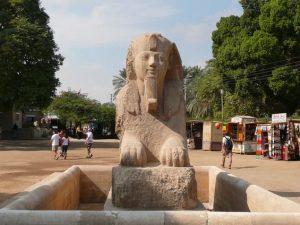The ancient Egyptian empire shifted as many as over a dozen Egypt Capital cities in its history, the most notable being Memphis, Thebes, Amarna, and Alexandria.
For two to three thousand pre-dynastic years until Egypt’s unification, the capitals of Upper and Lower Egypt shifted between no less than eleven cities – Upper capitals comprising Thinis, Nennusu, Khmun, Abydos, and Thebes; while Lower Egypt counted Avaris, Tanis, Sais, Bubastis, Heliopolis and Memphis among its premier locations.
Old kingdom: under King Menes or Narmer during this time, the capital was Memphis. The Third Dynasty (2686-2613 B. C. E.) is often called the beginning of the Old Kingdom.

First Intermediate Period: Memphis could not hold onto its title as Egypt Capital, and surrendered to Thebes as the capital when the Theban King Nebhepetre Mentuhotep won a civil war in around 1650 BC and instated his home city as capital. During this period, Egypt was weak. First Hieracleopolis, then Thebes became the capital city.
New Kingdom of Egypt Capital
New Kingdom- during this period, Queen Hatshepsut ruled as king. Her images on monuments were later defaced, probably for political reasons. Akhenaton (originally called Amunhotep IV) abolished all of the Egyptian Gods except for Aton, the visible disk of the sun, and established the capital at Akhetaton (Amarna).
During the period of Akhenaten, Amarna was the capital of Egypt. its early days saw an alarming rise in population as people flocked to the home of their king. Some estimate the city’s population to have been as much as fifty thousand, bringing it immediately in line with the other main cities.
Egypt went into decline during his reign. After Akhenaton’s death, Tutankhamun reestablished the capital in Thebes and destroyed all mention of Akhenaton and Aton. Egypt slowly returned to glory.
Third Intermediate Period: In this period (1069-525 B. C. E.), Tanis became the capital city. One famous king was Sheshonq I.